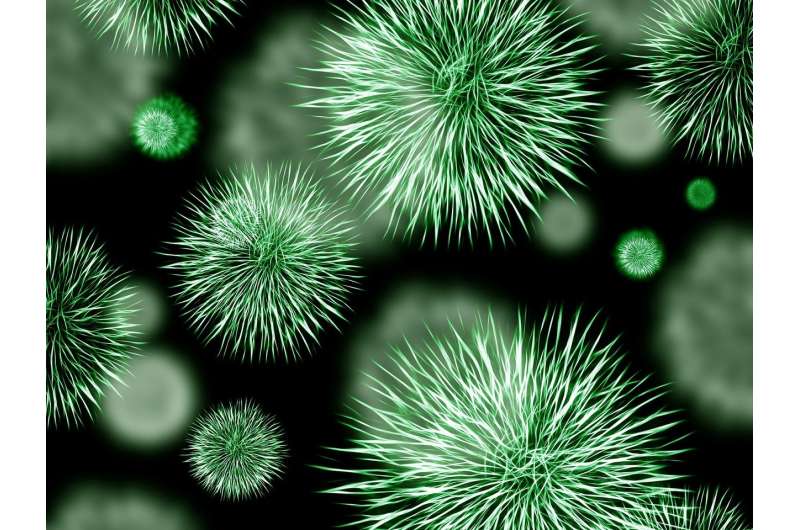Protein interaction helps Yersinia cause disease

Researchers at Umeå University, Sweden, in collaboration with an international team, have discovered a new mechanism for interaction between two proteins that are vital for the Yersinia pseudotuberculosis bacteria's pathogenic ability.
A common disease-causing strategy of bacteria is to transfer toxic proteins to host cells, for example in humans. Yersinia pseudotuberculosis is a bacteria that can cause gastrointestinal infections. The bacteria transfers proteins called Yop (Yersinia outer protein) through a complex needle structure forming a pore in the host cell membrane. Yop proteins are made up of segments with different functions. The YopH protein has a segment which counteracts the immune system of the host cells. Another segment binds to chaperones, a group of proteins that help other proteins uphold a correct structure, which is important for transporting YopH through the needle structure to the host cell.
A team of researchers led by professor Magnus Wolf-Watz at the Department of Chemistry, Umeå University, has now discovered how the chaperone binding part of YopH recognizes and interacts with the protein SycH. SycH is a chaperone whose task is to enable YopH to be transported through the needle structure and into the host cell. The research team has discovered that the chaperone binding part of YopH must completely loose its three dimensional structure to be able to grasp around the SycH protein like a horse's shoe.
"This type of mechanism for protein-protein interaction can be called 'coupled folding and binding,' and has not been seen before. Through this discovery we have contributed to a basic understanding of protein-protein interactions," says Magnus Wolf-Watz. "This is important because many functions inside cells are carried out by protein-protein complexes."
More information: Arun A. Gupta et al. Formation of a Secretion-Competent Protein Complex by a Dynamic Wrap-around Binding Mechanism, Journal of Molecular Biology (2018).
Journal information: Journal of Molecular Biology
Provided by Umea University

















